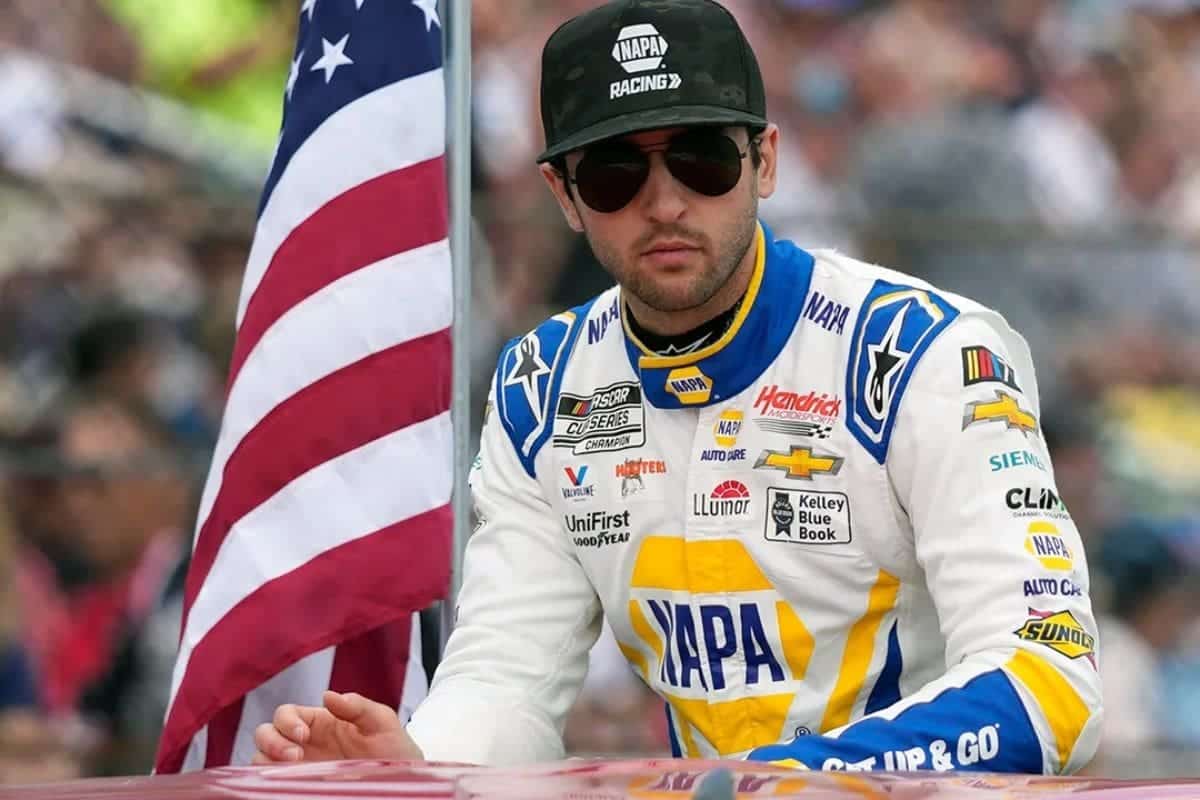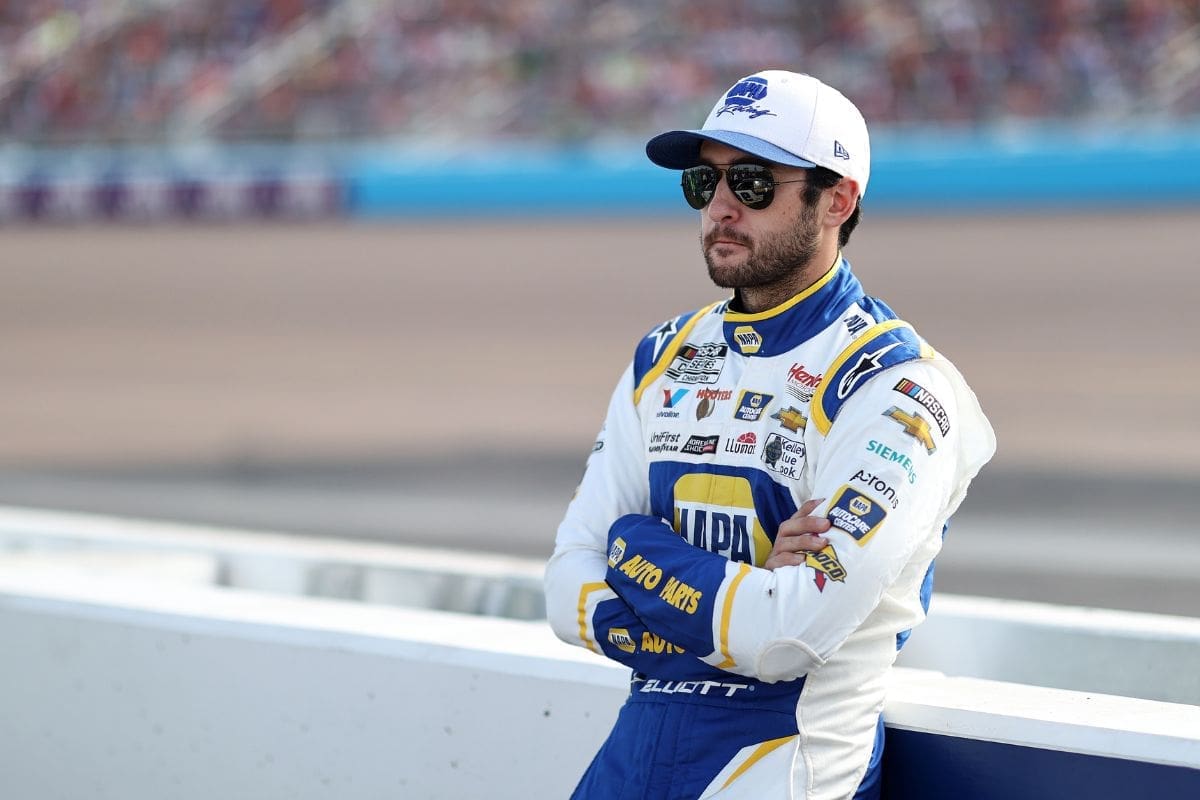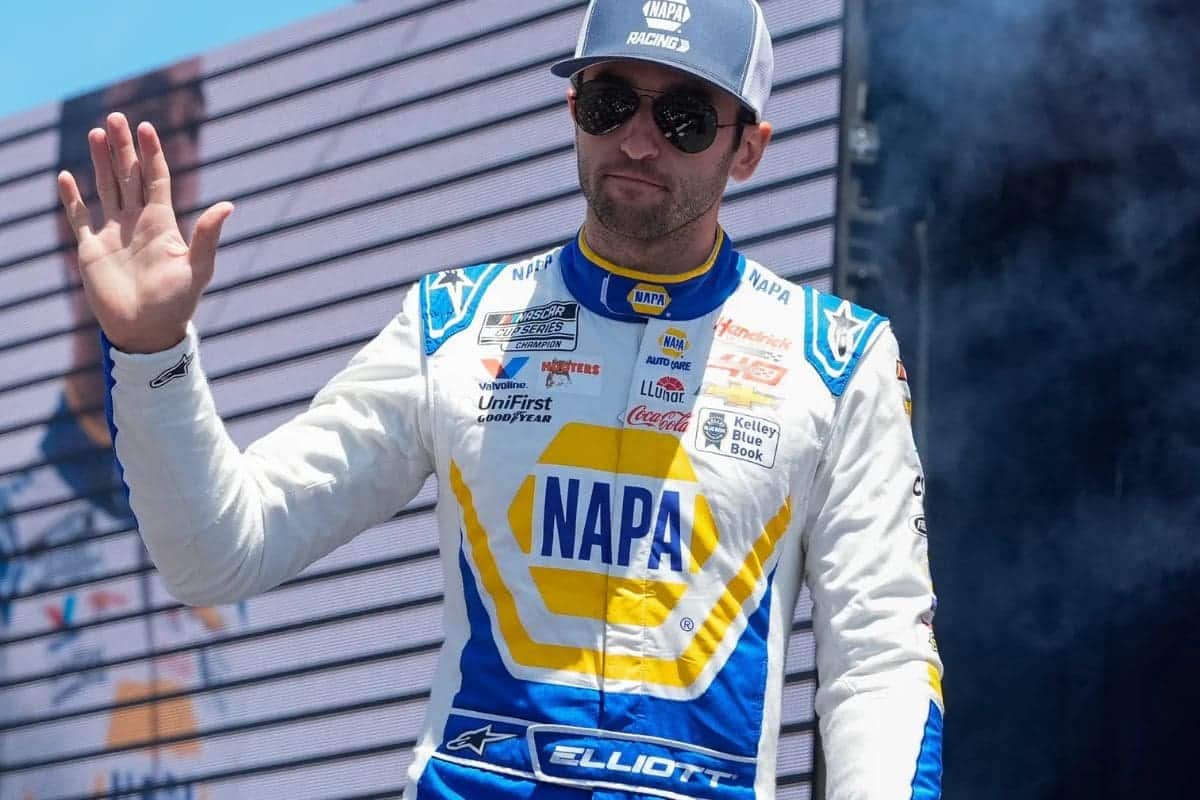Chase Elliott’s Speeding Penalty at Pocono: Chase Elliott‘s speeding penalty at Pocono Raceway has sparked heated debate within the NASCAR community, as it marks the end of his impressive 92-race streak without pit road infractions. This incident casts a spotlight on NASCAR’s enforcement of speeding regulations and raises questions about the consistency of rule application. Despite finishing ninth, Elliott’s reaction suggests a deeper frustration with the monitoring process. As the championship race intensifies, the mental resilience of Elliott and his team will be put to the test. How will this incident influence their tactical decisions moving forward?
Key Highlights
- Chase Elliott’s speeding penalty ended a 92-race streak without pit road infractions.
- NASCAR’s strict enforcement policy led to multiple drivers, including Elliott, being penalized.
- Elliott expressed frustration over perceived inconsistencies in NASCAR’s speed monitoring.
- The penalty highlighted the competitive disadvantages of a single infraction in a tight championship race.
The Speeding Penalty Incident at Pocono Raceway
The speeding penalty incident at Pocono Raceway marked a remarkable setback for Chase Elliott, breaking his 92-race streak without a pit road infraction and derailing a potential top-5 finish. Elliott’s transgression occurred in Section 7 of the pit road, a critical juncture where precision is paramount. The No. 9 Hendrick Motorsports team, typically known for its disciplined pit strategies, faced an unexpected challenge as Elliott was relegated to the back of the field. This penalty considerably altered the competitive dynamics of the race, compelling Elliott to navigate through the densely packed traffic.
Elliott was not the sole driver to fall foul of the pit road speed limit on that day. Remarkably, Kyle Larson, Austin Cindric, and Daniel Suárez were also penalized for similar infractions. This pattern of violations emphasizes the stringent enforcement of NASCAR’s regulations, reflecting a zero-tolerance policy towards speeding on pit road. The collective penalties serve as a stern reminder to all competitors about the critical importance of adhering to speed limits.
The implications of Elliott’s penalty were immediate and profound. Positioned for a commendable finish, the setback forced him to recalibrate his strategy on-the-fly, dealing with the intricacies of overtaking in a tightly contested field.
Chase Elliott’s Reaction and Current Standing
Chase Elliott’s reaction to the speeding penalty at Pocono Raceway reveals his frustration and resignation towards the lack of clarity from NASCAR officials. Elliott, who was downgrade to a ninth-place finish, articulated his concerns about the enforcement inconsistencies in Section 7 of the pit road.
“To be honest with you, I haven’t got a straight answer. You’re not going to get a straight answer from NASCAR, which is fine,” he stated, emphasizing the opaque nature of NASCAR’s communication.
Elliott’s comments reflect both discontent and acceptance of his fate, as he acknowledged the ambiguity surrounding the penalty. He pointed out that despite multiple pit stops without incident, the speeding infraction came unexpectedly, suggesting a potential flaw in the monitoring system.
His statement, “Whether the zone was too short or the zone wasn’t short enough, we hit an X amount of pit stops throughout the day where I wasn’t speeding and everybody else, apart from the handful of guys that got caught, weren’t speeding either,” indicates a broader concern that may affect other drivers as well.
From a tactical standpoint, Elliott’s approach is pragmatic. By chalking it up as a personal mistake, he redirects the narrative away from the specifics of NASCAR’s regulations, fundamentally minimizing the controversy.
“There’s nothing I can do about it, so what does it matter now really?” he concluded, signaling his intention to move forward rather than dwell on the incident.
Chase Elliott, who had not had a pit-road speeding penalty in 92 races, on the pit-road speeding penalty last week in a zone that some thought there was a possible issue with at Pocono as most of the field sped there in their prerace check: pic.twitter.com/gvfnIGzrsE
— Bob Pockrass (@bobpockrass) July 19, 2024
Currently, Elliott remains a formidable contender, but this incident highlights the challenges drivers face under stringent and sometimes unclear regulations. His reaction highlights a critical tension between drivers and regulatory bodies, one that could have broader implications for the sport’s governance.
Impact on Championship Race and Team Dynamics
Elliott’s ninth-place finish at Pocono Raceway has intensified the competition in the NASCAR Cup Series, with only three points separating him from teammate Kyle Larson. This narrow margin has amplified the tactical complexities and pressures within Hendrick Motorsports as the season progresses. The championship race is now more competitive than ever, with four drivers in serious contention for the regular-season title.
The dynamics within the Hendrick Motorsports team have inevitably been impacted by this razor-thin point differential. As the playoffs approach, the interplay between team collaboration and individual ambition will be essential.
- Point Differential: Elliott’s three-point lead over Larson highlights the importance of every race, lap, and pit stop. Both drivers’ performances in the next five races will be examined intensely, as even minor errors could have noteworthy ramifications.
- Team Strategy: The internal strategy at Hendrick Motorsports must balance supporting both drivers while ensuring the team’s comprehensive success. Aligning team goals with individual aspirations will be vital to maintaining harmony and maximizing results.
- External Competition: Tyler Reddick, trailing by just 15 points, and other formidable competitors are poised to capitalize on any missteps. This external pressure adds another layer of complexity to the team’s tactical planning.
As the championship race heats up, the intricate balance between individual and team dynamics at Hendrick Motorsports will play a decisive role in determining the ultimate victor. The next phase of the season promises to be a thrilling spectacle, with every decision potentially altering the course of the championship race.
Crew Chief Alan Gustafson’s Response and Looking Ahead
Despite the penalty at Pocono, Crew Chief Alan Gustafson remains confident as the team shifts its focus to the upcoming race at Indianapolis Motor Speedway.
Reflecting on the penalty, Gustafson discussed the inaccuracy of the speed detection in the zone, which he emphasized had been problematic from the beginning. His assertion, “That zone was way off from the get-go. It’s been way off. You know, you’re just flying blind on it,” highlights the crew chief’s frustration with the enforcement of the rules, yet he remains undeterred as they move forward.
The incident at Pocono, where Chase Elliott was penalized for speeding by just 0.16 miles per hour, has not dampened their spirits. Gustafson’s ability to maintain a calm and tactical outlook is pivotal as the team prepares for Indianapolis. Known for devising meticulous race strategies, Gustafson’s leadership will be critical in maneuvering the complexities of the famed oval track.
It’s been way off. You know, you’re just flying blind on it. It’s been wrong, so just don’t focus on it. Unfortunately, they didn’t admit their own fault there.” – Gustafson
Elliott’s performance at Pocono, where he showed top-three pace, signals strong potential for the No. 9 Hendrick Motorsports team. Gustafson’s response highlights an understanding of the nuances of race regulations and a readiness to adapt.
Looking ahead, the focus will be on optimizing race strategies and leveraging the car’s inherent speed. With the experience and analytical insight of Gustafson guiding the team, anticipation is high for a strong showing at Indianapolis, potentially securing Elliott’s third win of the season.
News in Brief: Chase Elliott’s Speeding Penalty at Pocono
The examination surrounding Chase Elliott’s speeding penalty at Pocono Raceway exemplifies NASCAR’s rigorous enforcement of regulations.
This incident, which ended his 92-race streak without infractions, highlights the critical importance of adherence to pit road rules in championship contention.
Elliott’s response and the team dynamics under Crew Chief Alan Gustafson‘s guidance will be pivotal in maintaining competitive momentum.
The mental resilience required emphasizes the intricate balance between precision and performance in high-stakes racing environments.
ALSO READ: Denny Hamlin Slams NASCAR’s Speeding Penalty at Pocono for Chase Elliott’s Dreadful Race





